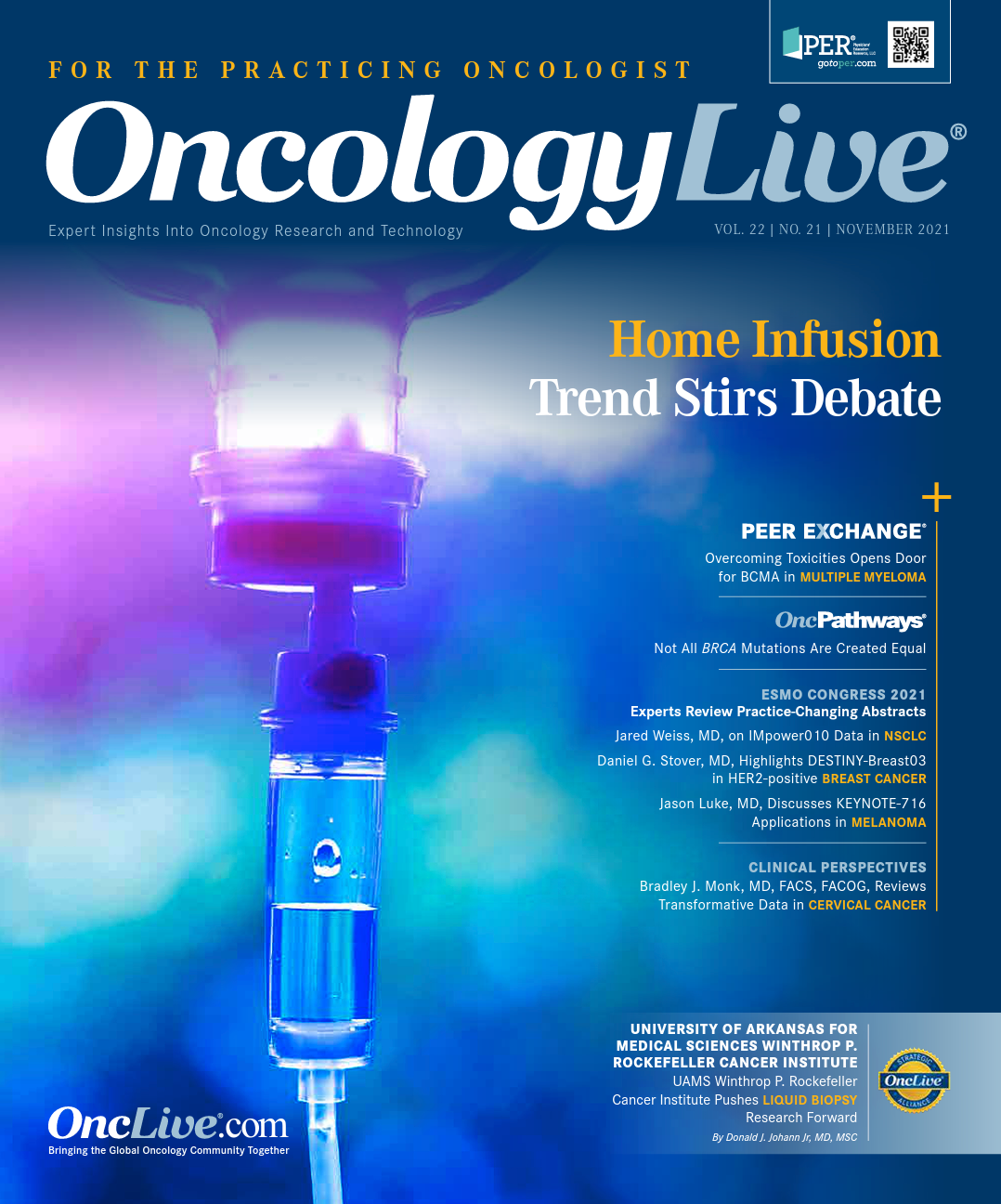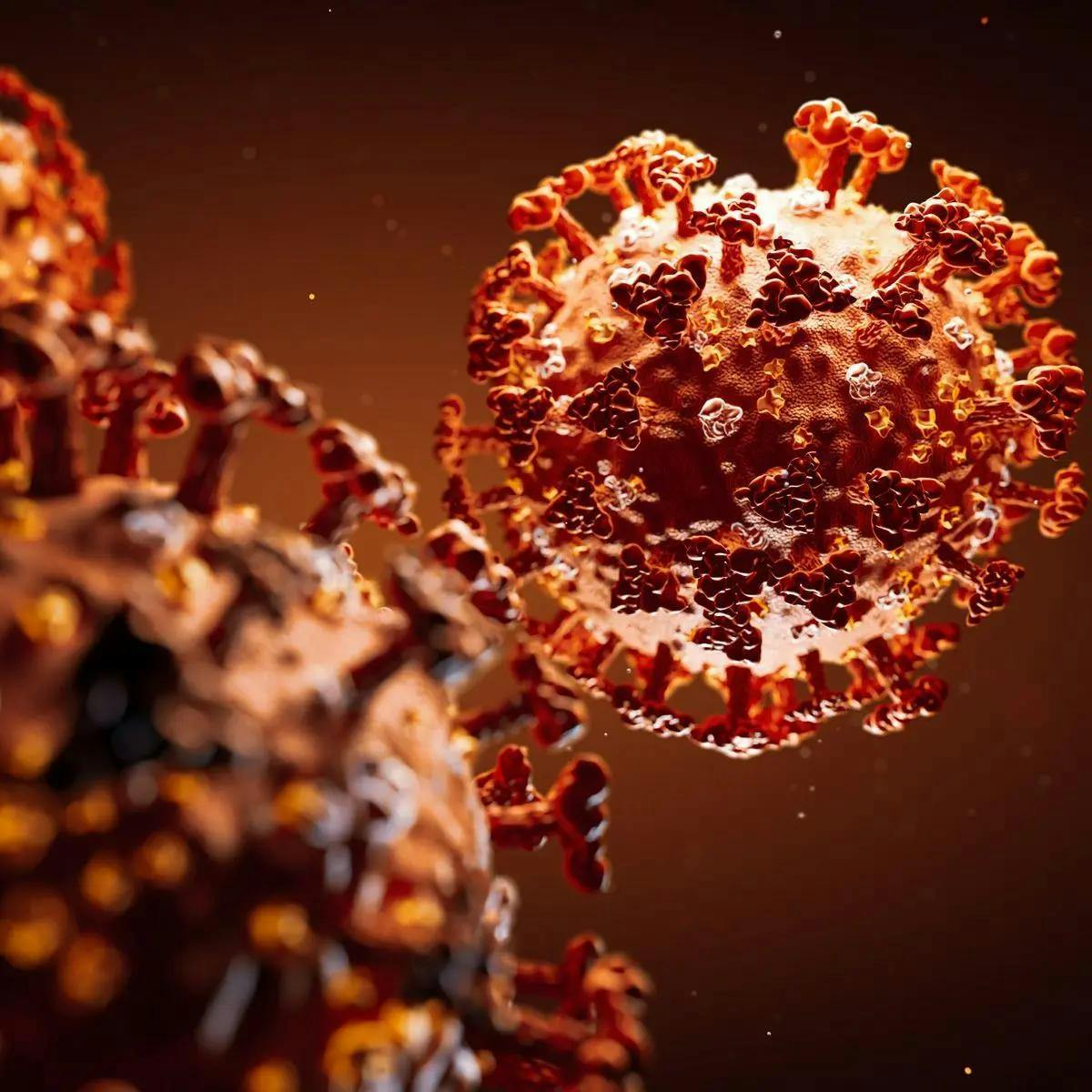Publication
Article
Oncology Live®
Novel ADC Appears to Leverage TROP2 Expression in NSCLC
Author(s):
Investigators aim to expand the treatment portfolio with the phase 3 TROPION-LUNG01 trial, which is designed to examine datopotamab deruxtecan vs docetaxel in patients with advanced or metastatic NSCLC without actionable genomic alterations who have previously received platinum-based chemotherapy and immunotherapy.
Solange Peters, MD, PhD

A void in the treatment landscape exists for patients with advanced non–small cell lung cancer (NSCLC) who receive 1 to 2 lines of prior therapy as the average overall survival (OS) is less than 1 year.1 TROP2 expression is associated with a poor prognosis, particularly in patients with adenocarcinoma histology, and offers a promising target for treatments.2,3
Investigators aim to expand the treatment portfolio for this patient population with the initiation of the phase 3 TROPION-LUNG01 trial (NCT04656652). The trial is designed to examine the TROP2-directed antibody-drug conjugate (ADC) datopotamab deruxtecan (DS-1062) vs docetaxel in patients with advanced or metastatic NSCLC without actionable genomic alterations who have previously received platinum-based chemotherapy and immunotherapy.4
“TROP2 is a glycoprotein that is expressed on many bacterial tissues and is highly overexpressed in cancers,” explained Solange Peters, MD, PhD, head of the Medical Oncology Department and of specialized consultation for thoracic tumors at Lausanne University Hospital in Switzerland, in an interview with OncologyLive®.
“TROP2 is strongly overexpressed on cancer tissue as compared [with] normal tissue by a very high magnitude of difference [and it] is a negative prognostic factor—the more TROP2, the shorter the lifespan of the patients. It was chosen [as a target] in the development of datopotamab deruxtecan [because of] its overexpression,” said Peters, who also serves as the physician in charge of the Thoracic Tumor Center at the hospital center and is an associate professor at the University of Lausanne.
Datopotamab deruxtecan is an ADC that replicates the payload of fam-trastuzumab deruxtecan-nxki (Enhertu) but with a lower drug to antibody ratio (4:1). Specifically, the agent comprises a humanized anti-TROP2 immunoglobulin G1 monoclonal antibody attached to a topoisomerase I inhibitor via a stable tetrapeptide-based cleavable linker.5
“Each antibody is going to the target with the 4 molecules of chemotherapy…. [This is] chemotherapy that one wouldn’t like to administer intravenously because it’s very toxic,” Peters said. “As soon as it’s bound, it will release…the 4 molecules of chemotherapy into the microenvironment of the cancer cell. It will also affect the cancer cells beside it, which didn’t or cannot bind the antibody.”
Early Data Establish Role for Datopotamab Deruxtecan
Investigators have evaluated datopotamab deruxtecan monotherapy in the ongoing phase 1 TROPION-PanTumor01 trial (NCT03401385). The dose-escalation and -expansion study includes a large cohort of adult patients with advanced or metastatic NSCLC. It also includes cohorts of patients with other tumor types, such as hormone receptor–positive, HER2-negative triple-negative breast cancer. The primary end points of the study are establishing a maximum-tolerated dose (MTD) and safety. Efficacy and pharmacokinetics are secondary end points.5,6
During the trial’s dose-escalation phase, patients with NSCLC received datopotamab deruxtecan at 0.27 mg/kg to 10 mg/kg once every 3 weeks. The MTD was 8 mg/kg once every 3 weeks. In the dose-expansion phase, patients in the NSCLC cohort received the agent at doses of 4 mg/kg (n = 50), 6 mg/kg (n = 50), and 8 mg/kg (n = 80).6
At the data cutoff of April 6, 2021, patients who received the 6-mg/kg dose had the best overall response rate (ORR) at 28%; all responses were partial responses. The median duration of response (DOR) was 10.5 months (95% CI, 5.6-not evaluable [NE]).6 Patients who received the 4-mg/kg dose had an ORR of 24%; the median DOR was NE (95% CI, 2.8-NE). Those who received the 8-mg/kg dose also had an ORR of 24%, with 1 patient experiencing a complete response. The median DOR was 9.4 months (95% CI, 5.8-NE).
“The first waterfall plots are very exciting because the vast majority of patients experienced benefit from this strategy, that being stable disease response,” Peters said.
In terms of safety, treatment-emergent adverse events (TEAEs) of any grade were reported in 98%, 98%, and 100% of patients at the 4-, 6-, and 8-mg/kg doses, respectively. Patients in the 8-mg/kg group had the highest rate of occurrence of grade 3 or higher TEAEs (58%); the incidence rate was 48% and 30% in the 6 mg/kg and 4 mg/kg arms, respectively.
Interstitial lung disease (ILD) was a TEAE of special interest. In the 8 mg/kg group, ILD was reported in 14% of patients, with reported incidence in 10% and 6% of patients at the 4-and 6-mg/kg dose levels, respectively. Drug-related fatal ILD occurred in 3 patients in the 8-mg/kg group and was not present in the other 2 dose level groups.6
“In the 8-mg/kg cohort there were more ILD [instances that were] drug related,” Peters said. “That’s the reason why, with almost the same level of response [with the 4- and 6-mg/kg doses], the 8-mg/kg dose level was abandoned. The toxicity profile was more in favor of the 2 lower doses.” Investigators concluded that the updated results continue to demonstrate highly encouraging antitumor activity and a manageable safety profile with datopotamab deruxtecan in patients with advanced or metastatic NSCLC.
“The main outcomes are exactly what you would expect from an early-stage trial: defining the maximum tolerated dose, [ie,] finding a cautious and efficacious dose [with which] to continue, which will be 6 mg/kg,” Peters said. “Establishing this dose is exciting.”
Details of TROPION-LUNG01
TROPION-LUNG01 is a randomized study of datopotamab deruxtecan at 6 mg/kg compared with docetaxel at 75 mg/m2 in adult patients with advanced or metastatic NSCLC without actionable genomic alterations. The patients have been previously treated with platinum-based chemotherapy and α-PD-1/α-PD-L1 monoclonal antibody, either in combination or sequentially (Figure4). The trial investigators will administer both agents via intravenous infusion on day 1 of each 3-week cycle. The study will enroll approximately 590 patients.4
Figure. Phase 3 TROPION-LUNG01 Trial (NCT04656652)

Eligible patients must have a life expectancy of at least 3 months, measurable disease based on local imaging assessment, and an ECOG performance status of 0 to 1 at screening. Patients also need to have adequate blood clotting function, a left ventricular ejection fraction of at least 50%, and adequate bone marrow, hepatic, and renal function 7 days prior to day 1 of cycle 1. All inclusion criteria must be met within 28 days of randomization.
Patients previously treated with a TROP2-targeted therapy, docetaxel as monotherapy or in combination with other agents, or any agent containing a chemotherapeutic agent targeting topoisomerase I are ineligible for enrollment. Patients with NSCLC who are eligible for definitive local therapy alone, who have uncontrolled or significant cardiovascular disease, or who have leptomeningeal carcinomatosis or metastasis will also be excluded.
The primary end points are progression-free survival (PFS) by blinded independent central review per RECIST 1.1 and OS. Secondary end points include investigator-assessed PFS, ORR, DOR, disease control rate, and time to response. The estimated study completion date is June 27, 2024.
“Datopotamab deruxtecan will [likely] fit into the second-line [treatment] strategies because we have already seen in fragile patients that it’s better than what we observe in fit patients in the second line with docetaxel,” Peters concluded. “Will it give some more visibility of the cancer cell and the cancer cell death in the immune system, allowing for a long-term benefit, as we like to see in immunotherapy? We’ll have to see if it’s feasible in terms of toxicity profile and, more importantly, if it’s durable in terms of efficacy. Otherwise, if you just have an additive phenomenon, you always have to think about sequencing. As soon as we see something synergistic, multiplying the beneficial effect, then [datopotamab deruxtecan] may become a frontline strategy.”
References
- Simeone JC, Nordstrom BL, Patel K, Klein AB. Treatment pat-terns and overall survival in metastatic non-small-cell lung cancer in a real-world, US setting. Future Oncol. 2019;15(30):3491-3502. doi:10.2217/fon-2019-0348
- Mito R, Matsubara E, Komohara Y, et al. Clinical impact of TROP2 in non–small cell lung cancers and its correlation with abnormal p53 nuclear accumulation. Pathol Int. 2020;70(5):287-294. doi:10.1111/pin.12911
- Inamura K, Yokouchi Y, Kobayashi M, et al. Association of tumor TROP2 expression with prognosis varies among lung cancer subtypes. Oncotarget. 2017;8(17):28725-28735. doi:10.18632/oncotarget.15647
- Study of DS-1062a versus docetaxel in previously treated advanced or metastatic non-small cell lung cancer without actionable genomic alterations (TROPION-LUNG01). ClinicalTrials.gov. Updated September 9, 2021. Accessed October 8, 2021. https://clinicaltrials.gov/ct2/show/NCT04656652
- Meric-Bernstam F, Spira A, Lisberg AE, et al. TROPION-Pan-Tumor01: dose analysis of the TROP2-directed antibody-drug conjugate (ADC) datopotamab deruxtecan (Dato-DXd, DS-1062) for the treatment (Tx) of advanced or metastatic non-small cell lung cancer (NSCLC). J Clin Oncol. 2021;39(suppl 15):9058. doi:10.1200/JCO.2021.39.15_suppl.9058
- Garon EB, Johnson M, Lisberg AE, et al. TROPION-PanTumor01: updated results from the NSCLC cohort of the phase 1 study of datopotamab deruxtecan in solid tumors. Presented at: International Association for the Study of Lung Cancer 2021 World Conference on Lung Cancer; September 8-14, 2021; Virtual. Abstract MA03.02.



























%20(2)%201-Recovered-Recovered-Recovered-Recovered-Recovered-Recovered-Recovered-Recovered-Recovered-Recovered-Recovered-Recovered-Recovered-Recovered-Recovered-Recovered-Recovered.jpg?fit=crop&auto=format)
%20(2)%201-Recovered-Recovered-Recovered-Recovered-Recovered-Recovered-Recovered-Recovered-Recovered-Recovered-Recovered-Recovered-Recovered-Recovered-Recovered-Recovered-Recovered.jpg?fit=crop&auto=format)
